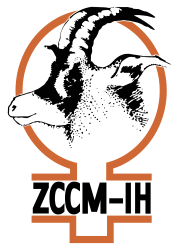
THE ZCCM-IH says the slowness to formalise the mining of gold in Zambia is due to a combination of factors.
ZCCM-IH chief executive officer Mabvuto Chipata says the amount of gold deposits at Kasenseli in Mwinilunga district will only be known once exploration works are complete, in the next three months.
He said the mandate of the ZCCM-IH in the gold sub-sector, as given to it by the Bank of Zambia, was to harness the entire gold sub-sector in the country.
“Harnessing means that we should work with everyone within the mining sector to help them explore, to help them [to] mine, to market and to help them process. Ultimately for us to be able to have gold reserves in the Bank of Zambia,” Chipata said on ZNBC TV’s Sunday Interview programme. “So, our mandate is very wide on the entire value chain. We have to work with everybody within the sector to develop and formalise this sector.”
He explained that gold had been in Zambia for many years and that traditionally, “this has been mined by artisanal miners and even informal miners – instead of the word illegal miners.”
“Essentially, in every place where the [gold] occurrence is there, you have had our people using traditional methods to mine gold and usually this is alluvial gold which is found on river beds. You get on the river bed and you get some soil, pan and you get some gold or you get some soil and using traditional methods you smelt that and get some gold,” he noted. “So, it (gold) has been around in this country for many years, it’s just that it has not been formalised.”
Asked by the programme host, Grevazio Zulu, why there was slowness to formalise the mining of gold in Zambia, Chipata said; “it’s a combination of factors.”
“A lot of Zambians who have got exploration licences in these places have had challenges to start exploration. As you are aware, exploration means that you sink in money in the ground to find out how much material is on the ground. For lack of financing, a lot of areas in Zambia are not exploited,” Chipata explained. “So, a lot of Zambians out there, as you saw from the statement from the PS (mines permanent secretary Barnaby Mulenga), do have gold licences. But for lack of funding, they have not been able to explore, and also lack of equipment to be able to do exploration. This is why this move that we are taking to formalise this sector is targeted at making sure that we can start helping our people to explore and determine the quantity of gold and then determine how much you need in order to start up a mine.”
He said Kansanshi Mine in Solwezi was the only one, as at now, that formally reports gold in the country.
Chipata pointed out that the moment the ZCCM-IH was given the mandate on gold mining, “we studied the whole gold sub-sector in Zambia.”
“We went to 21 areas to see what is happening on the ground. We immediately got a gold trading licence to enable us to buy gold from anyone who has gold and recently you have seen us advertising that anyone with gold in Zambia, let them come to ZCCM-IH and sell their gold,” he said. “What has been currently happening there is that our people on the ground, the artisanal miners, anyone goes there and offers them prices that are below market. [But] our prices are linked to the London market – we are able to offer them a better price so that they can get better value for the work they are doing.”
Chipata added that as a first step, the ZCCM-IH had targeted Kasenseli area, insofar gold mining.
“We now have got an exploration licence in Kasenseli. As we speak, drilling works have started in order to ascertain how much gold is in Kasenseli. The second step is that we have already invested in processing. So, we are in a hurry to develop this sector so that the country can begin to earn the required value from this sector,” he noted.
Asked whether or not Zambia’s biggest gold deposit was at Kasenseli, Chipata said such could only be determined once the exploration programme was complete.
“The exploration programme will take about three months. It started already about three weeks ago. After three months we’ll be able to know how much deposit is in Kasenseli and we’ll be able to inform the public,” he said.
On whether he agreed or not that gold could enable the country to pay back its loans, Chipata said such was possible.
“I agree, to the extent that, for example, our target for this year is that if we can get 40 tonnes of gold in this country, that we’ll be almost $2 billion,” said Chipata. “So, it is possible [to pay back our loans from gold earnings]. But we have to start quickly and we need the support of everybody for us to realise that. The task is very huge but it can be done!”
Source: https://www.themastonline.com/2020/06/02/were-in-a-hurry-to-develop-the-gold-sector-chipata/
